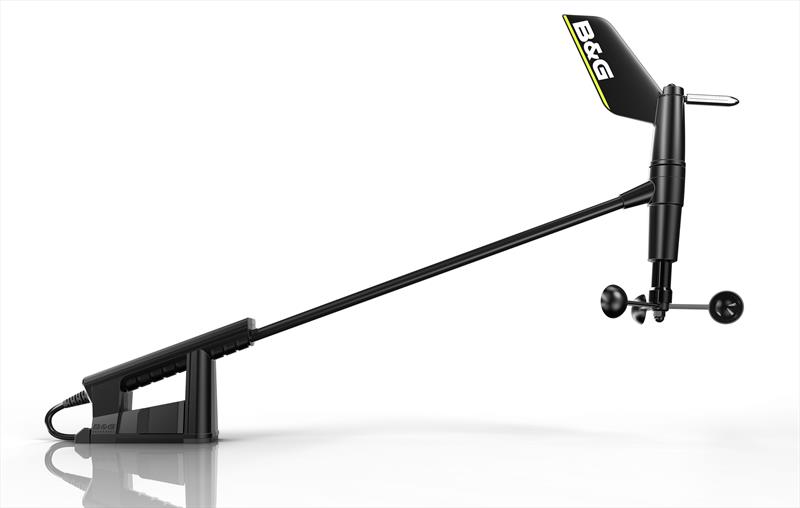
B&G's new wind sensors - we speak to Mike Sugden
by Mark Jardine 26 Jun 2018 12:00 BST

The new B&G WS300 wind series © B&G
We spoke to Mike Sugden of B&G about the WS310 and WS320, the new wired and wireless wind sensors launched on the 13th June.
Mark: With the WS320, using Bluetooth and solar power, you are making a huge weight saving for your wind sensor.
Mike: It depends on the amount of cable being used, but on a 35-foot yacht with a 17-metre mast it could equal a big weight saving in an area that you want to keep as light as possible – a 20 metre mast cable weighs nearly a kilo.
Mark: Also, this must save a huge amount of time on installation and maintenance?
Mike: With the maintenance and retrofit market this is a huge advantage. There's no need to run a cable through the rig – you just simply connect the base station to the instrument system, pair the base station and the wind sensor and fit the wind sensor to the top of the mast. That's it.
Mark: Yachts are notorious for having problems with wireless communications. How have you solved that?
Mike: Through a lot of testing! We have successfully tested ranges of well over the specified maximum of 30 metres with this new wind sensor – and we are very confident with that range – we have over 200,000 hours of testing completed. Clearly wireless is not for everyone - we offer the wired version for that very reason, having both options available to suit all possible needs and scenarios.
Mark: When it comes to wind sensors it is hugely important to maintain accuracy and this comes down to how the sensor is shaped and how it is collecting the wind information. What testing have you done to ensure that the data you are feeding back to instruments is reliable?
Mike: We've tested this both on and off the water, especially in the wind tunnel. Initial tests proved that the traditional cup and vane sensors were the way to go, so we took our previous sensors; the 213 and the 608 masthead units and developed from there, looking at aerodynamics, the shapes and seeing what worked best in the tunnel. We looked at the data, analysed it, made modifications, put it back in the tunnel and out in the real world and have been round that loop several times and we are very happy with the performance of the new sensor.
Mark: Does this sensor use the latest iteration of Bluetooth technology?
Mike: Yes, we are using the latest Bluetooth 4.0 which is a great technology for low-power but high performance wireless comms. We also transmit information such as battery status and charge indication back to the system, so we can see exactly what is going on inside the wind sensor.
Mark: With it being solar, what is the lifespan of the battery within the system? Specifically, if you're doing an overnight race or passage, will the sensor continue to work throughout the night?
Mike: The specification was for a minimum of 1 week with zero charge – and we've found from the testing that the wind sensor needs very little light to charge, and it charges very quickly. We have units outside our office here in Southampton and they were covered with snow for a few days this winter – it wasn't a problem. Typically we would expect over 10 days with absolutely no charge, which is an unrealistic situation.
Mark: Is the battery replaceable?
Mike: Yes, we offer a wide range of spare parts for the unit, such as the battery, wind vane, the wind speed cups, bearings etc. The intention is to keep the unit running for a long time and make it fully serviceable.
Mark: Are the WS310 and WS320 compatible with the full range of B&G instruments?
Mike: In the current market yes. It connects to the network backbone via Micro-C on an NMEA 2000 compatible network, so it works with all current instruments including H5000 and Triton, plus the Zeus and Vulcan range of Multi-Function Displays.
Mark: Thank you very much for your time and explaining more about the WS310 and WS320 wind sensors.
Mike: You're welcome!
Find out more...